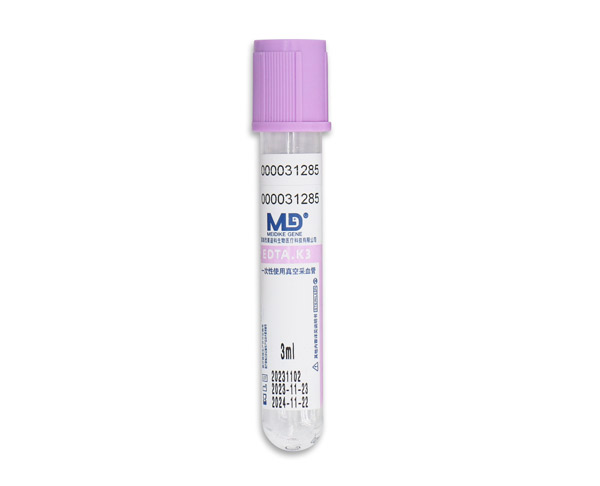In clinical laboratories, EDTA (Ethylenediaminetetraacetic acid) is a commonly used anticoagulant for preserving blood samples. EDTA is available in different formulations, including K2 EDTA and K3 EDTA. While both variants serve the purpose of preventing blood from clotting, there are notable differences between K2 EDTA and K3 EDTA. Understanding these differences is crucial for accurate laboratory testing and reliable results.

EDTA Vacuum Blood Collection Tube
Chemical Composition
K2 EDTA and K3 EDTA differ in their composition. K2 EDTA contains dipotassium salt of EDTA, which acts as an anticoagulant by chelating calcium ions in the blood. On the other hand, K3 EDTA contains tripotassium salt of EDTA along with a preservative, typically a small amount of potassium oxalate or potassium fluoride.
Anticoagulant Efficiency
The primary function of both K2 EDTA and K3 EDTA is to prevent blood clotting by binding to calcium ions. However, K3 EDTA, with its additional preservative component, offers enhanced anticoagulation properties compared to K2 EDTA. The presence of potassium oxalate or potassium fluoride in K3 EDTA helps to inhibit glycolysis, further preserving the integrity of blood samples.
Laboratory Applications
The choice between K2 EDTA and K3 EDTA depends on the specific laboratory applications. K2 EDTA is widely used in hematology testing, where it effectively preserves cell morphology and allows for accurate cell counting. On the other hand, K3 EDTA’s enhanced anticoagulant and glycolysis inhibition properties make it preferable for specialized tests such as blood glucose, lactate, or pyruvate measurements.
Effects on Laboratory Testing
While both K2 EDTA and K3 EDTA provide reliable anticoagulation, it is important to consider their potential impact on laboratory tests. The presence of potassium oxalate or potassium fluoride in K3 EDTA may interfere with specific assays, such as those involving calcium ions or fluoride detection. Laboratories must consider test requirements and consult guidelines to choose the appropriate anticoagulant for accurate results.
Sample Stability
Both K2 EDTA and K3 EDTA offer good sample stability for a certain duration. However, due to the additional preservative component, K3 EDTA provides slightly better stability, particularly in terms of inhibiting glycolysis. This can be advantageous when there are delays between sample collection and analysis.

















